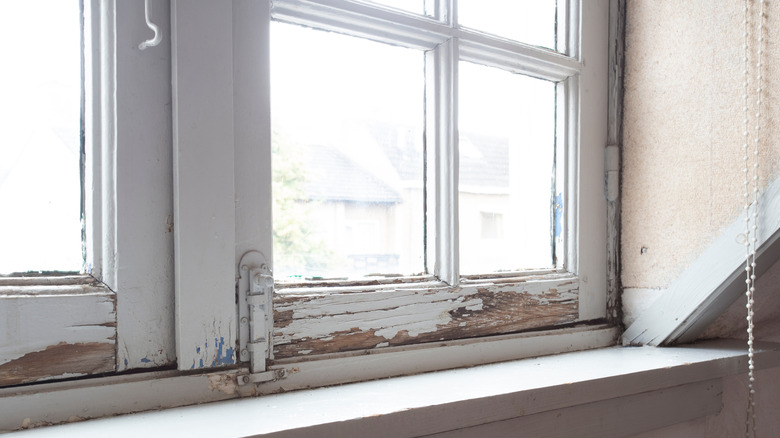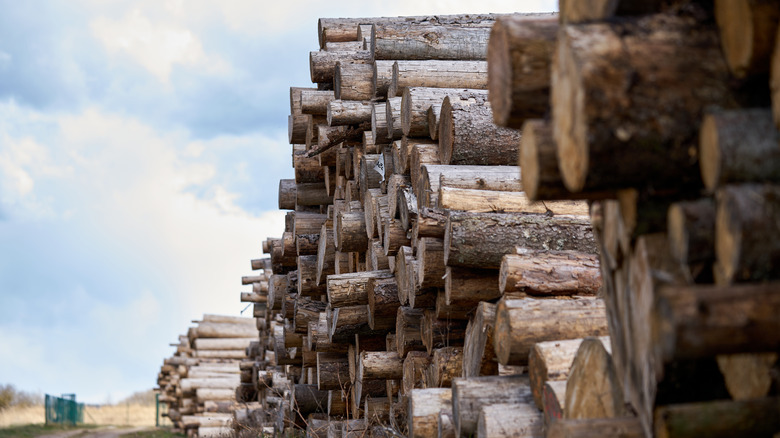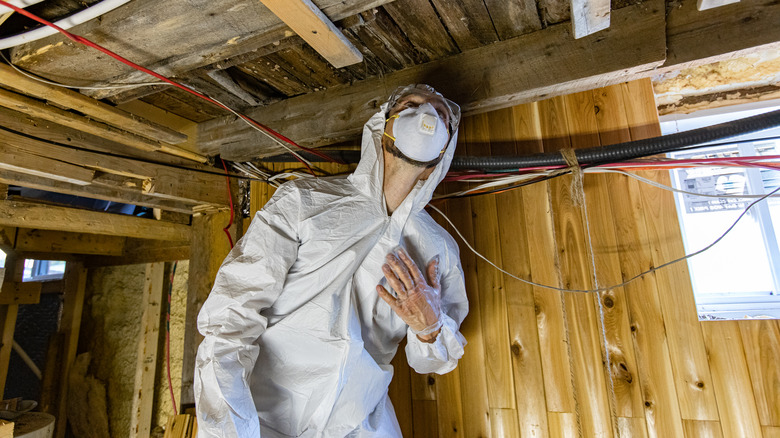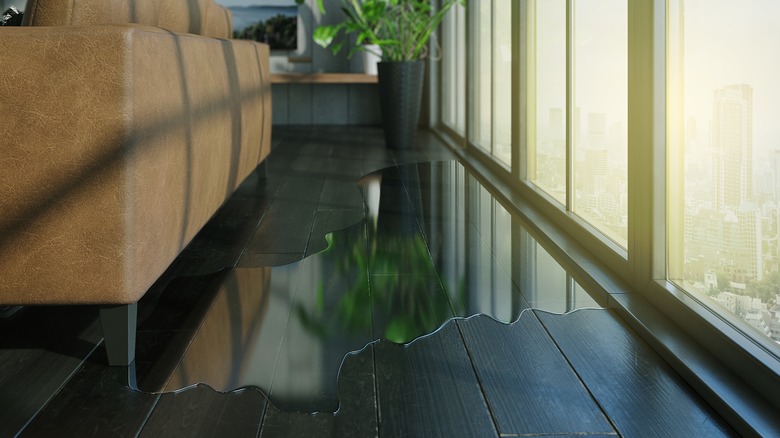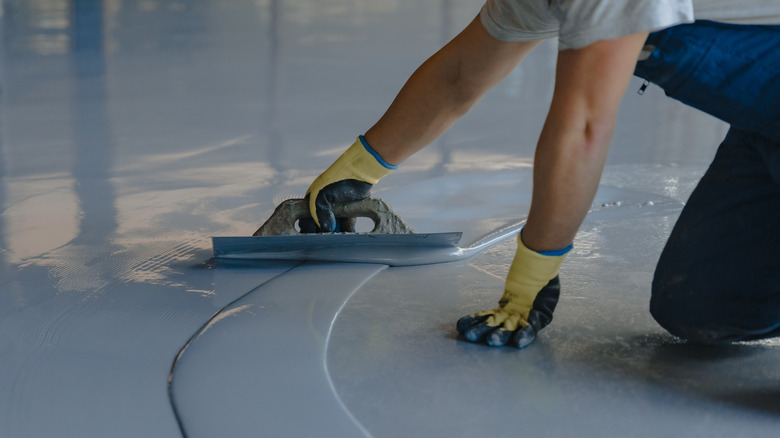Easy Ways To Fix Rotted Wood
Despite what you may think, rotten wood isn't just reserved for major wooden areas like decks or attics — you can find wood rot all over your home, such as door frames, siding, and even under the sink. So, what exactly is wood rot? According to My Handyman, wood rot is decay caused by a fungus that grows when the wood has a moisture content of 20% or more. If the timber can't dry out quickly enough or is constantly damp, it quickly turns into a hub for wood-eating fungi.
Checking for wood rot is the first step in preventing it from happening, but how do you identify it? When inspecting your home's exterior, Trotta's Power Washing says to look for cracks or holes in the siding, roof, and window and door frames. If you notice discoloration, splintering, or musty odors, this is a sign to check the interior for any rotted wood.
Prevention is key
Unfortunately, wood rot can't be prevented, but if you act quickly, you can stop the rot from spreading and further damaging your home. While there isn't a way to guarantee the prevention of wood rot from forming, there are steps you can take to possibly keep it at bay. House Logic suggests using decay-resistant or pressure-treated lumber for exterior projects and making sure to paint or stain each piece of lumber separately before assembling. Another crucial part of preventing wood rot is routinely cleaning your gutters. This prevents any clogging that can potentially cause water backup that overflows onto your siding.
Get rid of the rotted parts
If you want to prevent the wood rot from spreading, the best place to start is by removing the rotted parts of the wood. Using a claw hammer, CNC Masters says to scratch the rotted area to loosen up the rot while being mindful to not damage any of the healthy, solid wood. The rot will be much easier to remove once it's soft and loose. You can remove any remaining rotted wood using a V-shaped bit router to ensure you're only left with good wood.
Stop the moisture
Because wood rot stems from high moisture content, the best way to get it under control is to stop the source of moisture altogether. How you go about doing this depends on where the fungi are growing. If the wood rot is in your basement, you may need to fix any cracks and leaks you notice in the walls and/or floors. For rotting wood in the bathroom, My Handyman recommends installing a ventilation system to lower the room's moisture content. When it comes to door and window frames, it might require a simple seal job.
Epoxy
If you're not familiar with the substance, epoxy is essentially a very strong glue (stronger than super glue), made of a resin and hardener, according to Hunker. Epoxy can be used in all sorts of ways — mainly for fixing rotted wood. Before using the epoxy, clear out any rotted parts of the wood. Once you've finished that, CNC Masters says to paint the wood with a binding agent, then use a putty knife to mold the epoxy into the wood. Scrape off any excess and let the epoxy set overnight. Ta-da!
